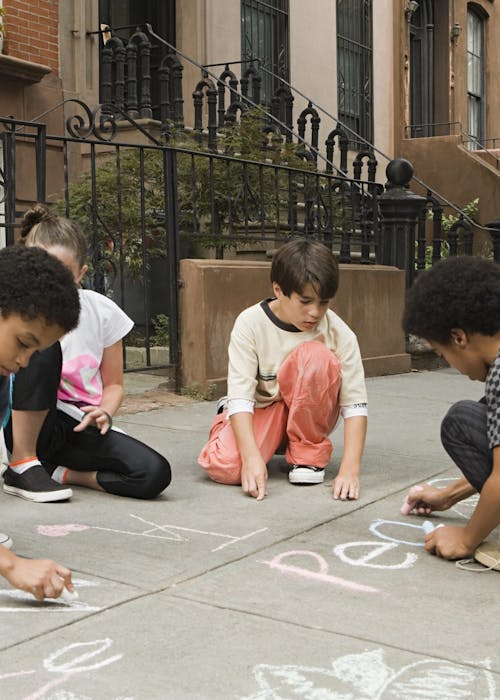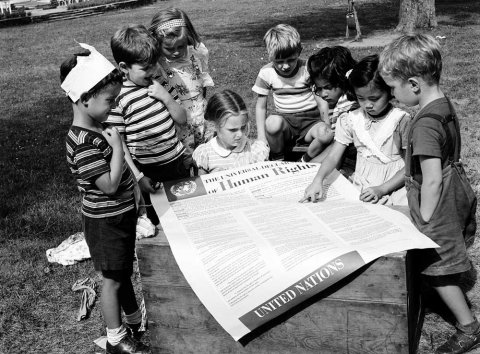

Children’s Rights in New York City
Insights
November 26, 2019
 Photo courtesy of the United Nations: In 1950, on the second anniversary of the adoption of the Universal Declaration of Human Rights, students at the UN International Nursery School in New York viewed a poster of the historic document.
Photo courtesy of the United Nations: In 1950, on the second anniversary of the adoption of the Universal Declaration of Human Rights, students at the UN International Nursery School in New York viewed a poster of the historic document.
November 2019 marks the 30th anniversary of the adoption of the United Nations’ Convention on the Rights of the Child (CRC), which outlines human rights in childhood—a period of human development in which “children must be allowed to grow, learn, play, develop and flourish with dignity.”
The CRC is the most widely and rapidly ratified international treaty, meaning countries have made the CRC part of their national laws. Every country in the world has ratified the CRC except for one—the United States of America.
It is ironic to find our country alone considering the important role the delegation from the United States had in shaping the articles of the Convention. Even without ratification, the document has profound implications for shaping child and family policy advocacy in the United States, and in New York, specifically.
The CRC is made up of a preamble and 54 articles (child-friendly version here), and it is easy to see how many of them align with our mission at Citizens’ Committee for Children:
Healthy:
Article 24 (among others)
“to enjoyment of the highest attainable standard of health and to facilities for the treatment of illness and rehabilitation of health”
Housed:
Article 27 (among others)
“to material assistance and support programmes, particularly with regard to nutrition, clothing and housing”
Educated:
Article 28 (among others)
“to education, and with a view to achieving this right progressively and on the basis of equal opportunity”
Safe:
Article 19 (among others)
“to protect the child from all forms of physical or mental violence, injury or abuse, neglect or negligent treatment, maltreatment or exploitation, including sexual abuse”
The alignment of children’s rights with CCC’s work may not be surprising to those who read my recent blog on role one of CCC’s founders, Eleanor Roosevelt, in drafting the Universal Declaration of Human Rights. The declaration helped shape the International Covenant of Economic, Social and Cultural Rights, and the International Covenant on Civil and Political Rights, which articles of the CRC draw upon.
Even though we, as a country, have not incorporated the CRC into our national laws, there have been local efforts to enact the principles laid out in the document. A day after its international adoption in November 1989, New York City Council passed a resolution pledging to uphold the convention as law for city agencies. More recently, in 2013, New York City Council filed Resolution 693-2011, calling on the US Senate to ratify convention on the rights of the child in order to enable NYC to participate in proceedings before its monitoring body. And in 2014, New York City Council adopted Resolution 115-2014, calling on New York State Legislature to pass and the Governor to sign into law A.2448 and S.4142, which would allow 16- and 17-year-olds to be appointed to NYC Community Boards. They did, an effort which promotes Article 12 of the CRC—children’s right to have a voice in maters that affect them.
Even with the absence of a children’s rights framework in the United States, CCC has been tireless in pursuit of legislation and budgets that reflect children’s rights and support their well-being and that of their families. Nevertheless, we should take time to think about how our policy research and advocacy might be strengthened by ratifying the CRC into our federal laws: “healthy, housed, educated, and safe” would not just be our vision for children in New York and throughout the country, it would be their right.




